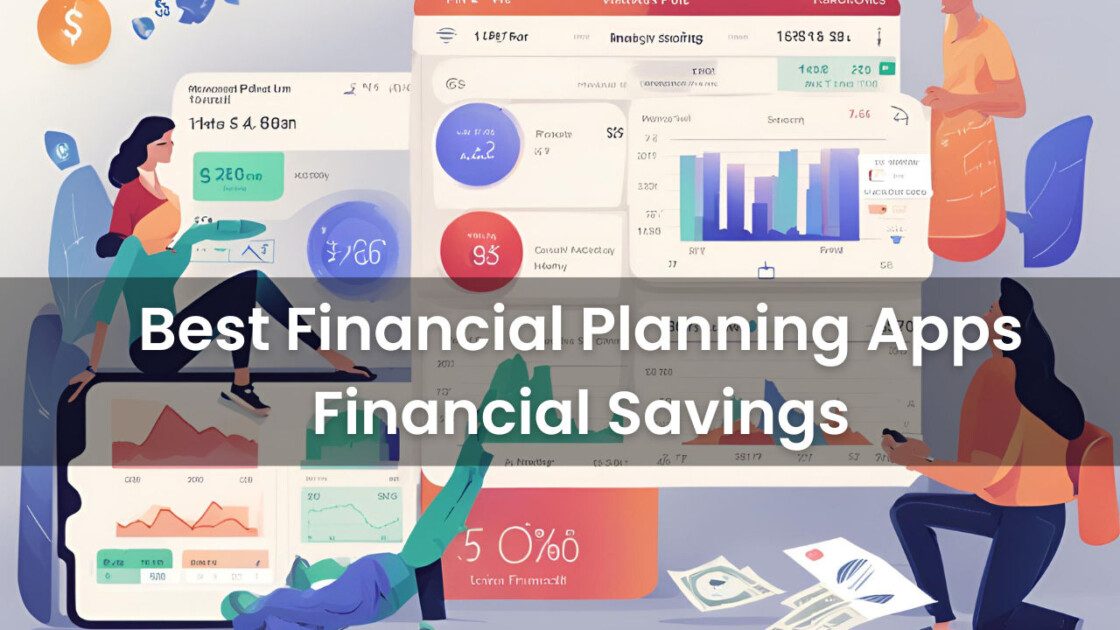Manage My Money | Personal Finance Management | Personal Money Management | Personal Financial Planning | Managing Your Money|Financial literacy empowers you to take control of your financial well-being. This comprehensive guide delves into the world of personal finance management, equipping you with the knowledge and strategies to effectively manage your money, achieve your financial goals, and build a secure financial future.

The Foundations of Financial Fitness – Building Your Money Management Strategy | Manage My Money
Building a secure and fulfilling financial future starts with a solid foundation in personal finance management. This section delves into the essential pillars that will empower you to take control of your money and achieve your financial goals.
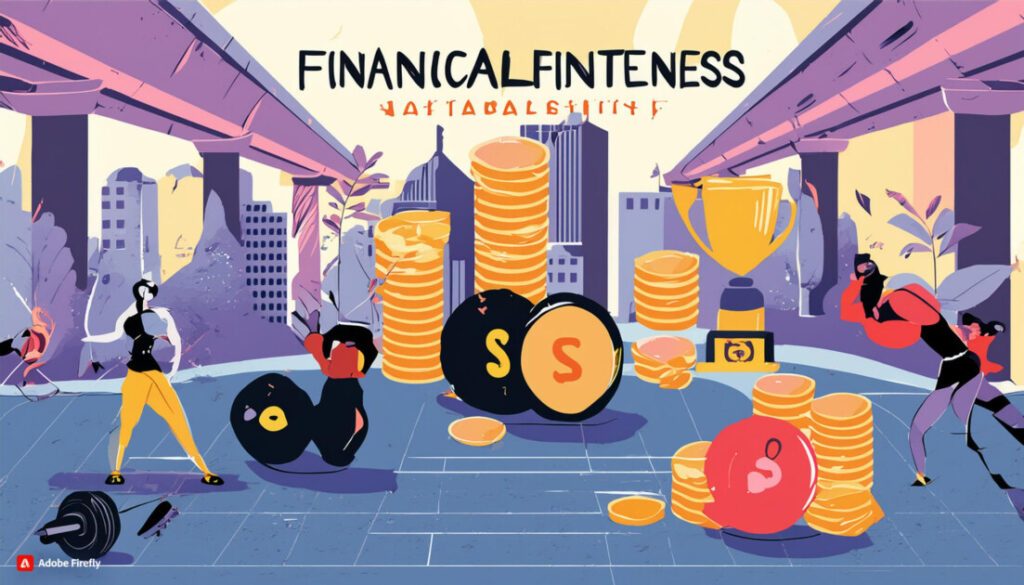
1. Know Your Income and Expenses:
- Track Your Income: Understanding your income from all sources is crucial. This includes your salary, wages, bonuses, commissions, and any side hustle income. Utilize pay stubs, bank statements, or a budgeting app to gather this information.
- Monitor Your Spending: Awareness of where your money goes is paramount. Track your expenses meticulously for a month (or a few months if your spending patterns are irregular) to identify areas for potential savings. Categorize your expenses into essential areas like housing, food, transportation, utilities, and debt payments. Additionally, track discretionary spending on entertainment, dining out, hobbies, and subscriptions. There are several methods to track your spending:
- Pen and Paper: This traditional method involves recording your income and expenses in a notebook. It’s a simple and effective way to begin, but can be time-consuming to maintain.
- Spreadsheets: Create a spreadsheet using software like Microsoft Excel or Google Sheets to record your income and expenses. This method offers greater flexibility for customization and analysis.
- Budgeting Apps: Numerous user-friendly budgeting apps (like Mint, YNAB, or Personal Capital) can seamlessly connect with your bank accounts, automatically categorize transactions, and generate insightful reports on your spending habits.
2. Create a Budget:
A budget is your financial roadmap, outlining how you plan to allocate your income towards various expenses and financial goals.
- Choose a Budgeting Method: Popular budgeting techniques include:
- 50/30/20 Rule: This widely used method allocates 50% of your income to essential needs (housing, food, transportation), 30% to wants (entertainment, dining out), and 20% to savings and debt repayment. It offers a simple framework for beginners.
- Zero-Based Budgeting: With this method, you allocate every dollar of your income towards specific categories, ensuring all income is accounted for. This approach promotes mindful spending and prevents unnecessary expenses.
- Prioritize Needs: Ensure your budget allocates sufficient funds to cover essential needs like housing, food, transportation, and utilities.
- Factor in Debt Repayment: Include debt repayment (minimum payments or accelerated payments) in your budget to eliminate high-interest debt.
- Allocate for Savings: Dedicate a portion of your income towards savings goals, such as an emergency fund, a down payment on a house, or retirement savings.
- Plan for Discretionary Spending: Allocate a realistic amount for discretionary spending on entertainment, dining out, hobbies, and other non-essential expenses.
3. Build an Emergency Fund: Personal Finance Management
Life is full of surprises. An emergency fund acts as a financial safety net to address unexpected events like job loss, medical emergencies, or car repairs. Aim to build an emergency fund that covers 3-6 months of your living expenses. This provides a buffer to navigate challenging situations without resorting to high-interest debt.
Here are some strategies to build your emergency fund:
* **Automate Savings:** Set up automatic transfers from your checking account to your emergency savings account. This ensures consistent saving and removes the temptation to spend.
* **Utilize Tax Refunds:** Direct all or a portion of your tax refund to your emergency fund.
* **Reduce Discretionary Spending:** Review your budget and identify areas where you can cut back on non-essential spending. Allocate these savings towards your emergency fund.
4. Prioritize Debt Repayment:
High-interest debt can significantly hinder your financial progress. Develop a debt repayment plan to eliminate high-interest debts first. Here are popular strategies:
* **Debt Snowball:** This method focuses on paying off the smallest debts first, regardless of interest rate. This can provide a sense of accomplishment and boost motivation.
* **Debt Avalanche:** This strategy prioritizes paying off debts with the highest interest rates first. This saves you money on interest charges in the long run.
5. Embrace the Power of Saving:
Consistent saving is crucial for achieving financial goals. Here’s how to cultivate a strong savings habit:
* **Set SMART Goals:** Establish Specific, Measurable, Achievable, Relevant, and Time-bound savings goals.
* **Automate Savings:** Set up automatic transfers from your checking account to savings accounts or investment accounts.
* **Pay Yourself First:** Treat your savings like a bill. Allocate a portion of your income towards savings before you begin spending.
* **Explore High-Yield Savings Accounts:** Park your
Cultivating Smart Saving Habits: Tools and Strategies for Long-Term Growth
Building a secure financial future hinges on consistent and smart saving habits. Moving beyond basic savings practices, this section explores strategies to maximize your savings and fuel long-term financial growth.

1. Leverage High-Yield Savings Accounts:
Not all savings accounts are created equal. Traditional savings accounts typically offer minimal interest rates. Consider high-yield savings accounts to maximize your return on savings. While the interest rates may seem small, they can compound over time, boosting your overall savings. Here are some key points about high-yield savings accounts:
- Higher Interest Rates: Compared to traditional savings accounts, high-yield savings accounts offer significantly higher interest rates. This allows your money to grow at a faster pace.
- Online Accessibility: Many high-yield savings accounts are offered by online banks. These accounts often come with minimal fees and easy online access for managing your funds.
- Limited Transaction Flexibility: While some high-yield savings accounts may offer a limited number of free monthly withdrawals, they are primarily designed for long-term savings and not everyday transactions.
2. Explore Retirement Savings Options: Personal Money Management
Saving for retirement is crucial for maintaining your financial well-being in your golden years. Here are two primary retirement savings vehicles to consider:
- Employer-Sponsored Retirement Plans: Many employers offer retirement plans like 401(k)s or 403(b)s. These plans allow you to contribute pre-tax dollars towards your retirement, reducing your taxable income. Additionally, many employers offer matching contributions, essentially free money that boosts your retirement savings. Be sure to contribute at least enough to capture the full employer match, and consider increasing your contributions as your income grows.
- Individual Retirement Accounts (IRAs): If you lack access to an employer-sponsored retirement plan, consider establishing an IRA. IRAs offer tax advantages similar to employer-sponsored plans. There are two main IRA types:
- Traditional IRA: Contributions to traditional IRAs may be tax-deductible (depending on your income tax bracket). Earnings within the account grow tax-deferred, and you are taxed on withdrawals in retirement.
- Roth IRA: Contributions to Roth IRAs are made with after-tax dollars, but qualified withdrawals in retirement are typically tax-free. This can be beneficial if you expect to be in a lower tax bracket in retirement.
3. Invest for the Long Term:
Investing allows your money to grow at a potentially faster rate than traditional savings accounts. While there is always some degree of risk involved in investing, a long-term investment horizon helps mitigate risk and allows for market fluctuations to even out over time. Here are some key points about investing for long-term growth:
- Diversification is Key: Don’t put all your eggs in one basket. Spread your investments across different asset classes like stocks, bonds, and real estate. This helps to mitigate risk as different asset classes tend to perform differently in various market conditions.
- Consider Low-Cost Index Funds: Index funds are passively managed investment vehicles that track a specific market index, such as the S&P 500. They typically offer lower fees than actively managed funds and can provide a diversified and long-term growth strategy.
- Invest Regularly: Develop a consistent investment strategy, such as contributing a fixed amount to your investment accounts every month. This approach, known as dollar-cost averaging, helps to smooth out market volatility and reduces the risk of investing a large sum of money at the wrong time.
- Seek Professional Guidance (Optional): Consider consulting with a financial advisor for personalized investment advice, especially if you are a beginner or have complex financial goals.
4. Automate Savings:
The power of “set it and forget it” is undeniable when it comes to saving. Automating savings removes the temptation to spend and ensures consistent growth of your savings. Here are some ways to automate savings:
- Automatic Transfers: Set up automatic transfers from your checking account to your savings account or investment account on payday or a designated date each month.
- Round-Up Apps: Round-up apps connect to your debit or credit card and automatically round up your purchases to the nearest dollar. The difference is then deposited into your savings account.
- Employer-Sponsored Savings Plans: If you participate in an employer-sponsored retirement plan, elect to have contributions automatically deducted from your paycheck. This ensures consistent savings for your future.
5. Challenge Yourself with Savings Goals:
Setting clear and achievable savings goals provides motivation and a sense of accomplishment. Here are some tips for setting effective savings goals:
- Short-Term vs. Long-Term Goals : Short-term goals might include saving for a vacation or a down payment on a new car. Long-term goals could be saving for a child’s education or a comfortable retirement.
- Specificity is Key: The more specific your goals, the more motivated you’ll be to achieve them. Instead of simply aiming to “save more,” set a concrete target amount and timeframe, such as “save $5,000 for a down payment on a house within 12 months.”
- Track Your Progress: Monitor your progress towards your savings goals. Utilize budgeting apps or spreadsheets to visualize your progress and stay motivated. Celebrate milestones to reinforce positive saving habits.
- Reward Yourself (Responsibly): Reaching savings goals is a cause for celebration! Consider rewarding yourself with a small treat, but ensure the reward doesn’t significantly derail your savings efforts.
Additional Strategies for Smart Saving: Personal Financial Planning
- Embrace the Power of Cooking at Home: Dining out can significantly impact your budget. Explore cost-effective and delicious home-cooked meals to save money on food expenses.
- Review Subscriptions Regularly: Audit your monthly subscriptions for streaming services, gym memberships, or other recurring charges. Cancel unused subscriptions to free up additional funds for savings.
- Negotiate Bills: Don’t be afraid to negotiate your cable, internet, or phone bills. Loyalty discounts or introductory offers might be available.
- Embrace a Frugal Mindset: Develop a mindful approach to spending. Consider the value you receive before making a purchase. Explore used items, borrow from friends or libraries, or participate in gift exchanges to save money.
Remember: Building a secure financial future is a marathon, not a sprint. Consistency and discipline are key. By implementing these smart saving strategies, you’ll be well on your way to achieving your financial goals and building long-term financial stability.
The Art of Budgeting – Effective Strategies for Making Your Money Work for You
A well-crafted budget acts as your financial roadmap, guiding your spending decisions and ensuring your income is allocated towards your goals. Here, we explore various budgeting strategies to help you make your money work for you:
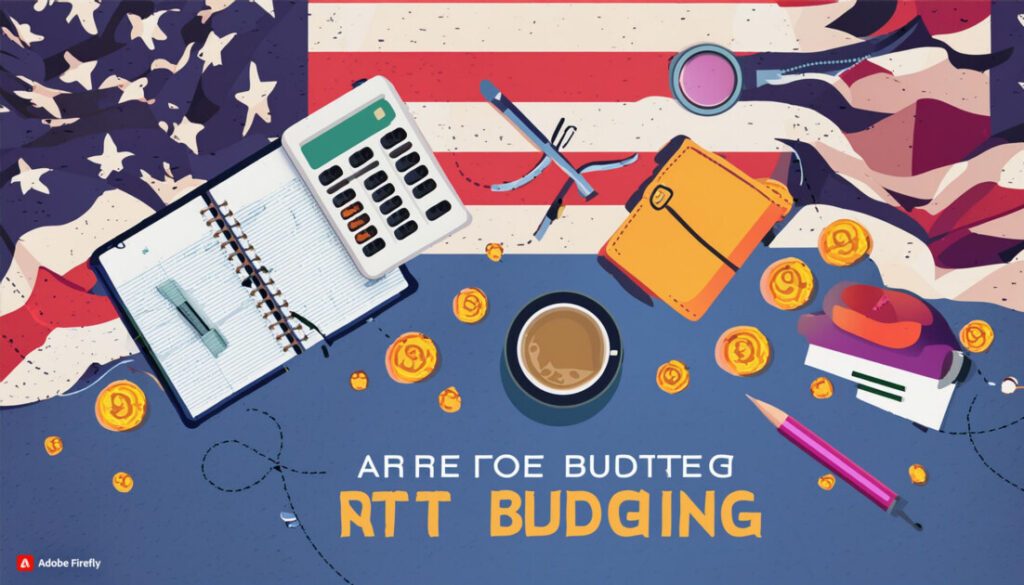
Popular Budgeting Methods:
- The 50/30/20 Rule: This widely used method offers a simple framework for beginners. It allocates your income as follows:
- 50%: Needs (housing, food, transportation, utilities)
- 30%: Wants (entertainment, dining out, hobbies)
- 20%: Savings and Debt Repayment
This method provides a good starting point, but it can be adjusted to fit your specific circumstances. For example, someone with high student loan debt may allocate a larger portion of their income towards debt repayment.
- Zero-Based Budgeting: This method is ideal for those seeking greater control over their finances. With zero-based budgeting, you assign every dollar of your income to specific spending categories, ensuring all income is accounted for. Here’s how it works:
- List your total monthly income from all sources.
- Identify all your spending categories (needs, wants, savings, debt repayment).
- Allocate a specific amount of money to each spending category until your total income is fully accounted for.
This method promotes mindful spending and prevents unnecessary expenses. However, it requires more discipline and time commitment compared to the 50/30/20 rule.
- Envelope System: This traditional method utilizes physical envelopes to manage spending. Assign each spending category (groceries, gas, entertainment) an envelope containing a designated amount of cash. Once the cash in an envelope is depleted, you cannot spend further in that category until the next budgeting cycle.
The envelope system provides a visual representation of your spending and can be helpful for individuals who struggle with managing debit or credit cards. However, it may be inconvenient for those who prefer digital transactions.
Choosing the Right Budgeting Method: Managing Your Money
The best budgeting method is the one that works best for you. Consider your financial goals, personality, and spending habits when selecting a method. Experiment with different approaches and find the one that fosters mindful spending and aligns with your needs.
Maximizing Your Budget:
- Track Your Expenses: It’s crucial to monitor your spending to identify areas for potential savings. Utilize budgeting apps, spreadsheets, or a simple pen-and-paper method to track your expenses for a month (or a few months if your spending patterns are irregular). Categorize your spending to understand where your money goes.
- Review and Adjust Regularly: Your budget shouldn’t be static. Review your budget regularly (monthly or quarterly) and adjust allocations as needed. Unexpected expenses, income changes, or evolving financial goals may necessitate adjustments.
- Embrace Technology: Numerous user-friendly budgeting apps can streamline the budgeting process. These apps connect with your bank accounts, categorize transactions, generate reports, and provide insights into your spending habits.
- Prioritize Needs Over Wants: Distinguish between essential needs (housing, food, transportation) and discretionary wants (entertainment, dining out). Ensure your budget prioritizes covering your needs before allocating funds towards wants.
- Find Savings Opportunities: Review your spending categories and identify areas where you can cut back. Explore ways to save on groceries, utilities, subscriptions, or entertainment.
Remember: A well-crafted budget is a powerful tool for financial success. By implementing these strategies and finding a budgeting method that works for you, you’ll gain control over your finances and make your money work for you.
Beyond the Basics – Advanced Personal Finance Management Strategies
Once you’ve mastered the fundamentals of budgeting, saving, and debt repayment, it’s time to explore advanced strategies to solidify your financial well-being and achieve long-term financial security. Here’s a roadmap to take your personal finance management to the next level:
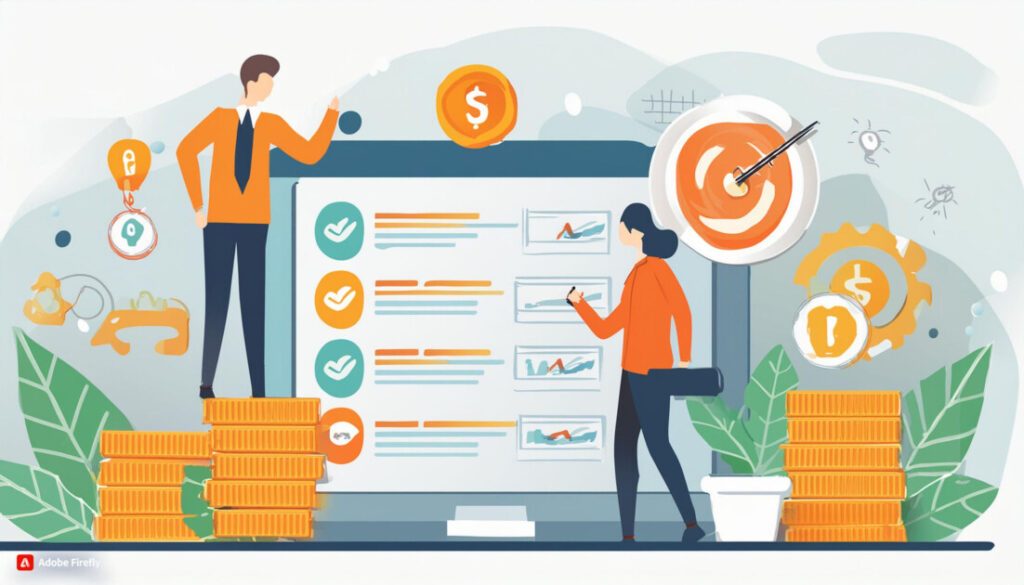
1. Risk Management:
Life is full of uncertainties. Proactive risk management strategies can safeguard your financial future from unexpected events. Consider these steps:
- Secure Adequate Insurance: Insurance protects you from financial losses due to unforeseen circumstances. Consider health insurance, auto insurance, homeowner’s or renter’s insurance, and disability insurance. Evaluate your coverage needs regularly and adjust policies as your life circumstances evolve.
- Health Insurance: Having adequate health insurance is crucial. Explore employer-sponsored plans, government programs (if applicable), or individual health insurance options to ensure you’re covered in case of illness or injury.
- Auto Insurance: Auto insurance is mandatory in most areas. Liability insurance protects you from financial responsibility if you cause an accident. Consider additional coverage options like collision and comprehensive insurance to safeguard your vehicle.
- Homeowner’s or Renter’s Insurance: Protect your home or belongings with homeowner’s or renter’s insurance, respectively. This coverage can protect against fire, theft, vandalism, and other perils.
- Disability Insurance: Disability insurance safeguards your income if you become unable to work due to illness or injury. This can be a crucial safety net, especially for individuals who rely heavily on their earned income.
- Prepare for Emergencies: An emergency fund serves as a financial cushion during unforeseen events like job loss, medical bills, or car repairs. Aim to build an emergency fund that covers 3-6 months of your living expenses. This provides a buffer to navigate challenging situations without resorting to high-interest debt.
2. Tax Planning:
While taxes may seem unavoidable, there are strategies to minimize your tax burden and maximize your after-tax income. Consider the following:
- Understand Tax Deductions and Credits: Familiarize yourself with available tax deductions and credits that can reduce your taxable income. Deductions lower the amount of income subject to taxes, while credits directly reduce your tax liability.
- Maximize Employer-Sponsored Retirement Plans: Contributing pre-tax dollars to employer-sponsored retirement plans like 401(k)s or 403(b)s reduces your taxable income and allows your retirement savings to grow tax-deferred (or tax-free in the case of Roth contributions).
- Consider Tax-Advantaged Accounts: Explore tax-advantaged investment accounts like IRAs (Traditional or Roth) for additional tax benefits. Contributions to Traditional IRAs may be tax-deductible (depending on your income tax bracket) and earnings grow tax-deferred. Roth IRA contributions are made with after-tax dollars but qualified withdrawals in retirement are typically tax-free.
- Seek Professional Guidance (Optional): For complex tax situations, consider consulting a qualified tax professional for personalized advice and assistance with tax planning and filing.
3. Estate Planning:
Estate planning ensures your assets are distributed according to your wishes after your passing. Here are key aspects of estate planning:
- Create a Will: A will is a legal document that outlines how you want your assets distributed after your death. It allows you to designate beneficiaries for your assets and appoint an executor to manage the estate settlement process.
- Establish Trusts: Trusts can be used to manage assets for beneficiaries, potentially minimize estate taxes, and provide for specific needs.
- Appoint a Power of Attorney: A power of attorney grants legal authority to a trusted individual to make financial and/or healthcare decisions on your behalf if you become incapacitated.
4. Building Wealth Through Investment:
Investing allows your money to grow at a potentially faster rate than traditional savings accounts. While there’s always inherent risk involved, a long-term investment horizon helps mitigate risk and allows market fluctuations to even out over time. Here are some advanced investment strategies:
- Diversification Beyond Stocks and Bonds: While stocks and bonds are core investment components, consider exploring alternative assets like real estate, commodities, or venture capital for further diversification and potential for higher returns (these also typically carry greater risk).
- Asset Allocation Based on Risk Tolerance: Your asset allocation (the mix of different asset classes in your investment portfolio) should reflect your risk tolerance. Aggressive investors can accommodate a higher percentage of stocks, while conservative investors may favor a higher allocation towards bonds and other fixed-income securities.
- Rebalancing Your Portfolio: Over time, the market performance of different asset classes can cause your portfolio allocation to drift from your target percentages. Regularly rebalance your portfolio to maintain your desired asset allocation and risk profile.
Embracing Technology – Tools and Apps to Simplify Your Finances
The digital age has revolutionized personal finance management. Numerous user-friendly tools and apps streamline various aspects of managing your money, saving you time and effort. Here’s a look at some essential financial technology (FinTech) tools to consider integrating into your financial routine:
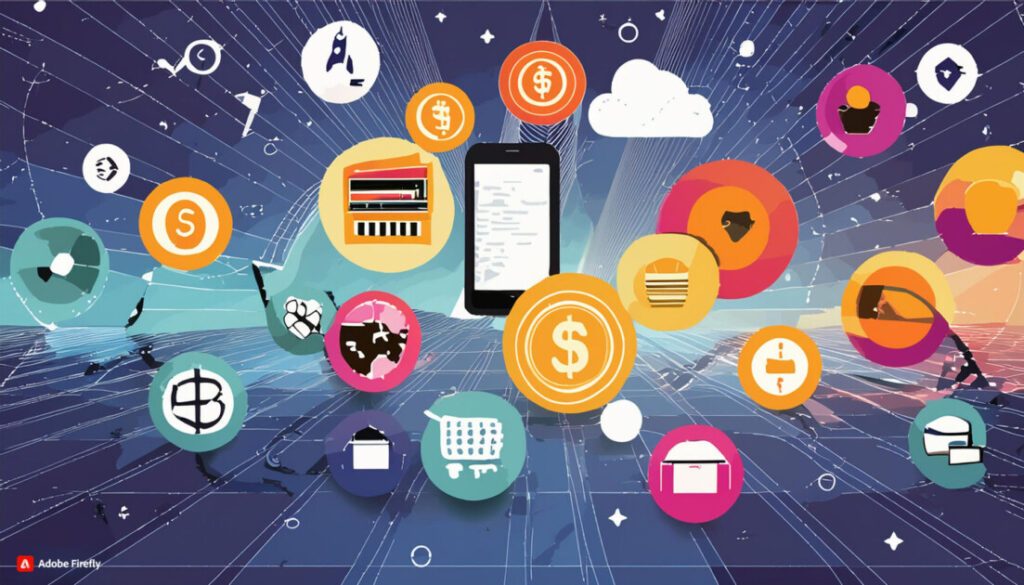
1. Budgeting Apps:
Gone are the days of cumbersome spreadsheets or pen-and-paper budgeting. Budgeting apps offer a convenient and efficient way to manage your finances:
- Features: These apps seamlessly connect with your bank accounts, automatically categorize transactions, generate spending reports, and provide insightful visualizations of your income and expenses.
- Benefits: Budgeting apps promote mindful spending by offering real-time insights into your spending habits. They can also help you stay on track with your financial goals by allowing you to set spending limits and track progress towards your savings targets.
- Popular Options: Some popular budgeting apps include Mint, YNAB (You Need a Budget), Personal Capital, and Mvelopes.
2. Investment Platforms:
Investing used to be a complex process reserved for professionals. Today, online investment platforms empower individuals to take control of their investment journey:
- Features: These platforms offer access to a broad range of investment options, including stocks, bonds, ETFs (Exchange-Traded Funds), and mutual funds. They often provide fractional shares, allowing you to invest in expensive stocks with smaller amounts.
- Benefits: Online investment platforms offer user-friendly interfaces, educational resources, and automated investing tools like dollar-cost averaging. This makes investing more accessible and manageable for beginners.
- Popular Options: Some popular investment platforms include Charles Schwab, Fidelity Investments, Vanguard, and Robinhood.
Also Read –
The Benefits of Free Government iPhones and Government Phones
Bears vs. Vikings Inactives: Who is Out Tonight on MNF Week 12 Matchup?
Greenfield International Stadium: The Perfect Venue for Twenty20 International Matches
The Enduring Legacy of Balto: Where to Watch, Sequels & More! 2025
Mastering Movement: A Comprehensive Guide to OSRS Agility Training (USA Focus) 2025
Best VPN Reddit| Site-to-Site VPN | Business VPN Solutions
3. Bill Pay Services:
Streamline your bill payments and avoid the hassle of writing checks or remembering due dates with online bill pay services:
- Features: These services, often offered by banks or third-party providers, allow you to schedule and automate bill payments directly from your checking account.
- Benefits: Bill pay services ensure timely payments, eliminating the risk of late fees. They also save you time and provide a convenient way to manage all your bills from a single platform.
- Availability: Bill pay services are typically offered by most banks and credit unions. You may also find them through online payment processors like PayPal.
4. Expense Tracking Apps:
Gain a comprehensive understanding of your spending habits on the go with expense tracking apps:
- Features: These apps allow you to manually track your daily expenses by entering transactions or using receipt scanning features. They categorize your spending and provide insightful reports on your spending patterns.
- Benefits: Expense-tracking apps provide real-time insights into your spending, helping you identify areas for potential savings and make informed financial decisions.
- Popular Options: Popular expense-tracking apps include Mint (which offers both budgeting and expense-tracking features), PocketGuard, and Wally.
5. Financial News and Education Apps:
Stay informed about the latest financial trends, investment strategies, and personal finance news with educational apps and resources:
- Features: These apps provide curated news feeds, educational articles, podcasts, and video tutorials on various personal finance topics.
- Benefits: Financial news and education apps empower you to make informed financial decisions by staying up-to-date on market trends and learning from financial experts.
- Popular Options: Popular options include The Motley Fool, Investopedia, The Wall Street Journal, and Bloomberg.
Remember: Technology is a powerful tool to simplify your finances, but it shouldn’t replace sound financial planning principles. Utilize these FinTech tools strategically to gain control of your money and achieve your financial goals.
Building Financial Resilience – Weathering Life’s Storms
Life throws curveballs. Financial resilience equips you to navigate unexpected challenges and emerge financially secure. Here’s how to cultivate this essential strength:

1. Maintain an Emergency Fund:
An emergency fund acts as a financial safety net during unforeseen events like job loss, medical emergencies, or car repairs. Aim to build an emergency fund that covers 3-6 months of your living expenses. This buffer allows you to address challenges without resorting to high-interest debt.
- Savings Strategies:
- Automate Savings: Set up automatic transfers from your checking account to your emergency savings account. This ensures consistent savings and removes the temptation to spend.
- Reduce Discretionary Spending: Review your budget and identify areas where you can cut back on non-essential expenses. Allocate these savings towards your emergency fund.
- Explore High-Yield Savings Accounts: Park your emergency fund in a high-yield savings account to maximize your return while maintaining easy access to the funds.
2. Diversify Your Income Streams:
Relying solely on one source of income exposes you to risk. Consider these strategies to create a financial safety net:
- Develop Side Hustles: Explore freelance work, online gigs, or a part-time job to generate additional income.
- Invest in Income-Generating Assets: Consider rental properties or other investments that provide passive income streams.
- Negotiate Raises: Research average salaries for your position and experience level. Use this data to confidently negotiate a raise and increase your primary income source.
3. Review and Update Insurance Coverage:
Regularly assess your insurance needs (health, auto, home) and adjust coverage as your life circumstances evolve:
- Life Insurance: Consider life insurance, especially if you have dependents, to provide financial security for your loved ones in case of your passing.
- Disability Insurance: Disability insurance safeguards your income if you become unable to work due to illness or injury.
4. Maintain a Good Credit Score:
A good credit score unlocks access to better loan rates and financial products. Practice responsible credit card usage, pay bills on time and maintain low credit utilization ratios to build and maintain a good credit score.
5. Develop a Financial Safety Net:
Build a network of supportive family and friends who can offer emotional and potentially financial support during challenging times. Open communication with loved ones about your financial situation can foster a sense of security and community.
Remember: Financial resilience is a continuous process. By incorporating these strategies into your financial management approach, you’ll be better prepared to weather life’s storms and achieve long-term financial stability.
Conclusion – Your Financial Journey Awaits
Personal finance management is a lifelong journey, filled with learning, growth, and achieving your financial goals. The strategies outlined in this guide empower you to take control of your money, make informed financial decisions, and build a secure financial future.
Key Takeaways:
- Knowledge is Power: Educate yourself on personal finance fundamentals. Utilize resources like books, articles, online courses, and financial advisors to broaden your financial knowledge.
- Embrace Financial Planning: Develop a personalized financial plan that outlines your goals, needs, and risk tolerance. This roadmap guides your financial decisions and keeps you focused on achieving your long-term objectives.
- Start Small, Build Momentum: Don’t feel overwhelmed. Begin with small, manageable steps, like tracking your expenses or creating a budget. Gradually implement more advanced strategies as you gain confidence.
- Celebrate Milestones: Acknowledge and celebrate your financial achievements, big or small. This reinforces positive financial habits and motivates you to stay on track.
- Seek Help When Needed: There’s no shame in seeking professional guidance. Consult a qualified financial advisor for personalized advice on complex financial matters or to develop a customized financial plan.
Remember: Financial mistakes are inevitable. Don’t dwell on them. Learn from your experiences, adjust your approach, and move forward with a positive mindset.
Embrace the Journey:
Personal finance management is not a static destination, but rather a continuous journey of learning, adapting, and growing. By implementing the strategies outlined in this guide, you’ll gain the knowledge and confidence to navigate the financial landscape and achieve your financial dreams.
Disclaimer:
Manage My Money | Personal Finance Management | Personal Money Management | Personal Financial Planning | Managing Your Money|Financial literacy The information provided in this guide is for educational purposes only and should not be construed as personalized financial advice. It’s highly recommended to consult a qualified financial advisor for personalized financial planning tailored to your unique circumstances and goals.
FAQ for Cultivating Smart Saving Habits: Tools and Strategies for Long-Term Growth
What is the difference between traditional savings accounts and high-yield savings accounts?
Traditional savings accounts typically offer minimal interest rates. High-yield savings accounts offer significantly higher interest rates, but may have limitations on withdrawals.
What are the two primary retirement savings vehicles?
Employer-sponsored retirement plans (like 401(k)s or 403(b)s) allow you to contribute pre-tax dollars towards retirement and often come with employer matching contributions.
Individual Retirement Accounts (IRAs) offer tax advantages similar to employer-sponsored plans. Traditional IRAs allow for tax-deductible contributions (depending on your income tax bracket) with earnings growing tax-deferred. Roth IRAs are funded with after-tax dollars but qualified withdrawals in retirement are typically tax-free.
What is the importance of investment diversification?
Diversification involves spreading your investments across different asset classes (stocks, bonds, real estate) to mitigate risk.
What are some ways to automate savings?
You can set up automatic transfers from your checking account to your savings account or investment account.
Round-up apps automatically round up your debit or credit card purchases to the nearest dollar and deposit the difference into your savings account.
Elect to have contributions automatically deducted from your paycheck for employer-sponsored savings plans.
Which budgeting method is right for me?
The best budgeting method is the one that works best for you. Consider your financial goals, personality, and spending habits when selecting a method (50/30/20 rule, zero-based budgeting, envelope system).
What are some tips for maximizing my budget?
Track your expenses to identify areas for potential savings.
Review and adjust your budget regularly.
Utilize budgeting apps or spreadsheets to streamline the process.
Prioritize needs over wants.
Find opportunities to cut back on expenses.
What types of insurance should I consider?
Health insurance is crucial to protect yourself from medical bills.
Auto insurance is mandatory in most areas (liability, collision, comprehensive).
Homeowner’s or renter’s insurance protects your property.
Disability insurance safeguards your income if you become unable to work due to illness or injury.
What are the benefits of tax planning?
Tax planning can help you minimize your tax burden and maximize your after-tax income by understanding tax deductions and credits, maximizing employer-sponsored retirement plans, considering tax-advantaged accounts, and potentially seeking professional guidance for complex tax situations.
What estate planning documents should I have?
A will outlines how you want your assets distributed after your death and designates an executor to manage the estate settlement process.
Trusts can be used to manage assets for beneficiaries, potentially minimize estate taxes, and provide for specific needs.
A power of attorney grants legal authority to a trusted individual to make financial and/or healthcare decisions on your behalf if you become incapacitated.
What are some popular budgeting apps?
Mint, YNAB (You Need a Budget), Personal Capital, and Mvelopes are some popular options.
What are some features of online investment platforms?
These platforms offer access to a broad range of investment options, fractional shares, and often provide educational resources and automated investing tools.
How can bill pay services benefit me?
Bill pay services ensure timely payments, eliminate the risk of late fees, and save you time by managing all your bills from a single platform.
How much should I save in my emergency fund?
Aim to build an emergency fund that covers 3-6 months of your living expenses.
What are some strategies to diversify my income streams?
Develop side hustles, invest in income-generating assets, or negotiate raises.
Is investing risky?
All investments carry some degree of risk. The risk level varies depending on the asset class (stocks typically carry higher risk than bonds). A long-term investment horizon helps mitigate risk as market fluctuations tend to even out over time.
How much should I invest?
The amount you invest depends on your individual circumstances, risk tolerance, and financial goals. There’s no one-size-fits-all answer. However, it’s generally recommended to start investing early and consistently contribute to your investments over time.
What are some resources to learn more about investing?
Numerous resources are available to help you learn about investing, including books, articles, online courses, and investment platforms that offer educational materials. You can also consult a financial advisor for personalized investment advice.
How can I improve my financial literacy?
There are many ways to improve your financial literacy. Read books and articles, listen to podcasts, take online courses, and attend financial literacy workshops. The more you learn about personal finance, the more confident you’ll feel managing your money.
What are some common financial mistakes to avoid?
Living beyond your means, not saving enough for retirement, ignoring debt, and making impulsive investment decisions are some common financial mistakes. By educating yourself and making informed decisions, you can avoid these pitfalls.
How can I stay motivated on my financial journey?
Set realistic and achievable goals. Track your progress and celebrate your milestones. Find a support system of friends or family members who are also interested in improving their finances.
I mentioned consulting a financial advisor throughout this guide. How do I choose one?
Look for a qualified financial advisor who is a fiduciary, meaning they are legally obligated to act in your best interests. Ask friends or family for recommendations or search online directories. Conduct interviews with potential advisors to find someone you feel comfortable with and who understands your financial goals.
Manage My Money | Personal Finance Management | Personal Money Management | Personal Financial Planning | Managing Your Money|Financial literacy
I hope this extended FAQ section provides even more valuable information!





